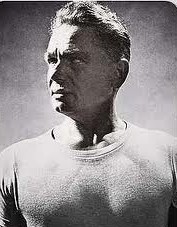“In 10 sessions, you will feel the difference. In 20, you will see the difference. And in 30, you’ll be on your way to having a whole new body.” – Joseph Pilates
Joseph Pilates was born near Dusseldorf, Germany in 1880. A sickly child, whom suffered from asthma, rickets and rheumatic fever, he dedicated his entire life to becoming physically stronger. In his youth, Joseph trained in body building and became proficient in skiing, diving and gymnastics.
In 1912 Joseph moved to England where he earned a living initially as a boxer, circus performer and a self-defence trainer of English detectives. When World War 1 broke out he was interned in a camp with other German nationals. He became a nurse in the camp and trained other interns in physical fitness. It was here that he began to develop his system of original exercises that later became “Contrology”. He was widely credited when none of the inmates succumbed to an influenza epidemic that killed thousands. This, he claimed, testified to the effectiveness of his system.
In 1926 Joseph moved to New York where he met his wife Clara, and they set up an exercise studio on Eight Avenue where Joseph taught his technique.His style of exercising soon became popular with dancers from the New York City Ballet as his exercises enabled them to strengthen their bodies as well as rehabilitate after injury. It wasn’t long before Joseph’s pupils were endorsing the method by opening their own studios.
Joseph Pilates died in 1967 at the grand old age of 87. Since his death the work of Joseph Pilates has become a widely varied and diverse subject, with many instructors having their own interpretations of his original exercises.
His principles remain the fundamental basis of every modified variation, but by using up-to-date research we can create a fusion of the original and the modern exercises, making today’s Pilates matwork classes accessible to everyone of all fitness levels and abilities.

